We departed our ship Viking Osiris at 8:00 am promptly and headed by bus downstream, crossing the Nile on the new bridge just north of Luxor. (Yes north is downstream. The Nile flows north.)
While the Temples of Luxor and Karnak are on the Eastern shore, the tombs of the Kings and Queens of the New Kingdom (1550-1069 BCE) are on the West Bank, towards the setting sun. Like the Sun, the spirits will enter the underworld from the west, then arise in the east. [There are many similarities to the ancient gods of Mexico, which I covered in Xoloapan: God over the Water.]
The road up the Valley of the Kings winds and twists up through the dry mountains.
By the beginning of the New Kingdom the Kings had become concerned about the safety of their tombs. The tombs of the Old Dynasty Kings buried at Saqqara and Giza had already been robbed by this time, and the kings wanted their tombs hidden, because there was no resurrection without a mummy. They found their spot on the West Bank: a natural pyramid formed by a large limestone mountain to the west.
Upon the ascension of a King, his Vizier, chief stone mason, and architect would locate a suitable place for a tomb, which the King would then visit. If approved, a foundation ritual was performed and work would begin.
A city of workers lived several miles away. They would first remove the surface material until they reached bedrock, then the stone cutters cut the entrance and began a shaft deep into the limestone mountain. Even before completion of the shaft another team of workers would begin the decorative process, first carefully smoothing and polishing the rock surface, filling imperfections, then applying a fine layer of plaster to the surface.
Next the artists would begin their work, first sketching out the designs, as in the above photo from Seti I tomb, followed by other artists who would carve out the design, with painters filling in the relief and background. A final beeswax coating protected the images. The photo above is from the last chamber f the SETI I tomb he died before it was completed.
The shafts, and the burial chambers at the end of the shafts, varied in depth. Once the King was embalmed and entombed, the shafts were sealed and the entrance obliterated.
The first king buried here was Ahmose I (1575-1550 BCE, 18th Dynasty). He began the New Kingdom Era by liberating Egypt from the Hyksos. Egypt became a great power during the 18th Dynasty, which lasted at least 290 years. Wealth poured into the country from its foreign empire, and it developed a strong government.
For the next 500 years kings, powerful nobles, and sometimes their sons were buried inside this mountain. The last king buried here was Ramses XI, of the 20th Dynasty, 1090 BCE. By the time of the 20th Dynasty Egypt was under attack by the Sea People and sustained heavy damage. It was the transition from the Bronze Age to the Iron Age. The final years of the 20th Dynasty are sometimes referred to as the Bronze Age Collapse. This collapse affected other kingdoms outside Egypt as well.
There are at least 63 tombs here, but not all are open, and digging continues. We visited five tombs: Tut-Ankh-Amen (King Tut) from the 18th Dynasty, Seti I from the 19th Dynasty, and Ramses III, Ramses IV, and Ramses IX from the 20th Dynasty.
The 63 tombs here are numbered in their order of discovery. King Tut’s tomb is KV 62, meaning it was the 62nd tomb discovered. The year was 1922 and the discovery was by the English archaeologist Howard Carter, who was being financed by the English Lord Carnarvon. (I will do a separate post on Howard Carter. We visited his interesting house nearby after leaving the Valley of the Kings.)
King Tut died at the age of c. 19, perhaps by assassination. He had a skull wound which had not healed at the time of his death. The High priest married the wife of King Tut and became king on his death. Hmm. We have motive, means and opportunity. The prosecution rests its case.
Egyptian power had reached its peak during the reign of King Tut’s predecessor, Akhenaten. Military campaigns into Asia and Nubia had created a Kingdom to which its neighbors sent tribute, gifts, and letters of friendship.
Because of his young age his tomb had not been completed, so an existing tomb was hastily adapted for his burial. Unlike the other tombs, only the burial chamber was painted. 3300 years later the colors are still magnificent.
Above: short video of his burial chamber.
His mummy is the only mummy that has been found in its original tomb, and is displayed just outside the burial chamber. It shows the shrunken features of a young man.
King Tut’s death mask (opening photo) is made of 13 kilos of solid gold is at the Old Egyptian Museum.
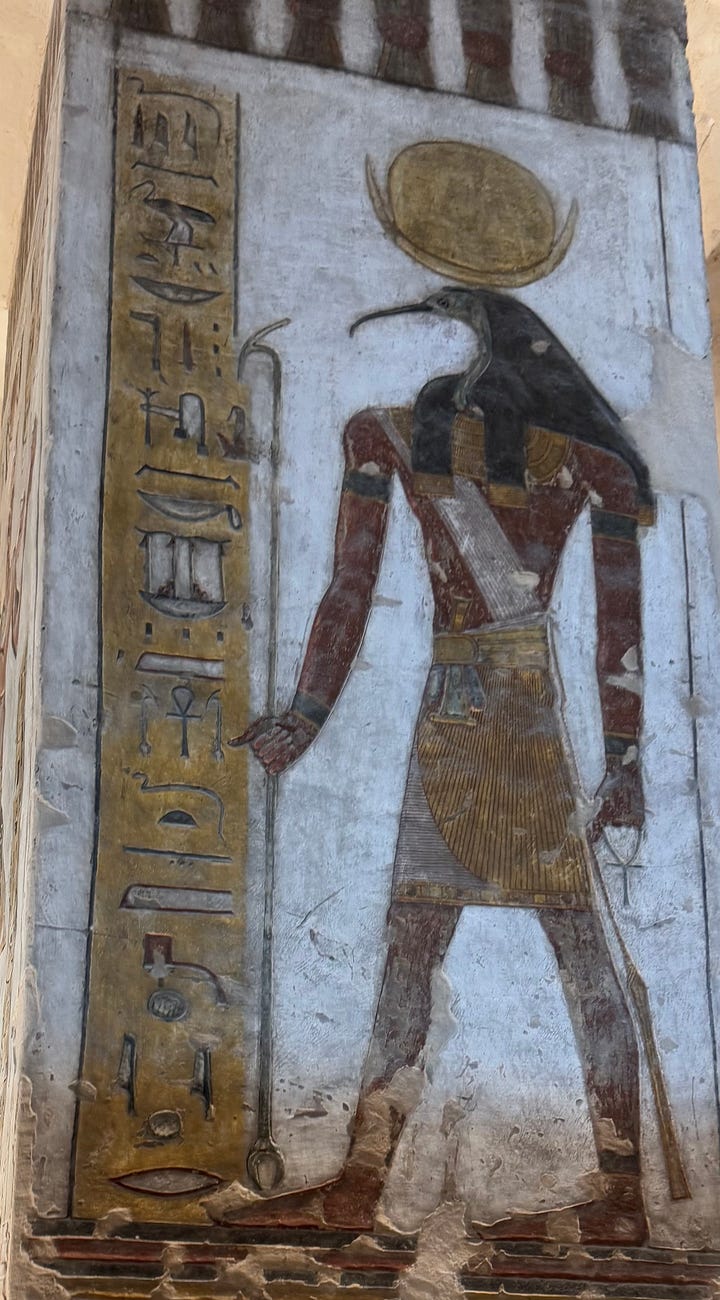
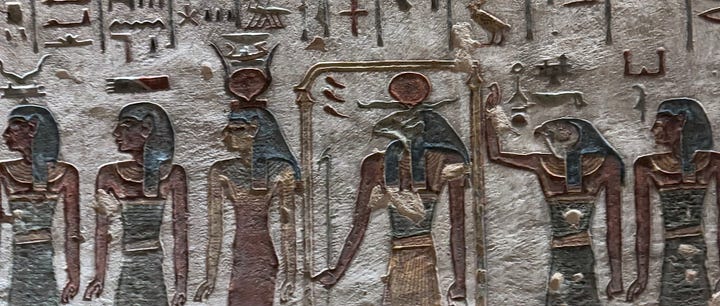
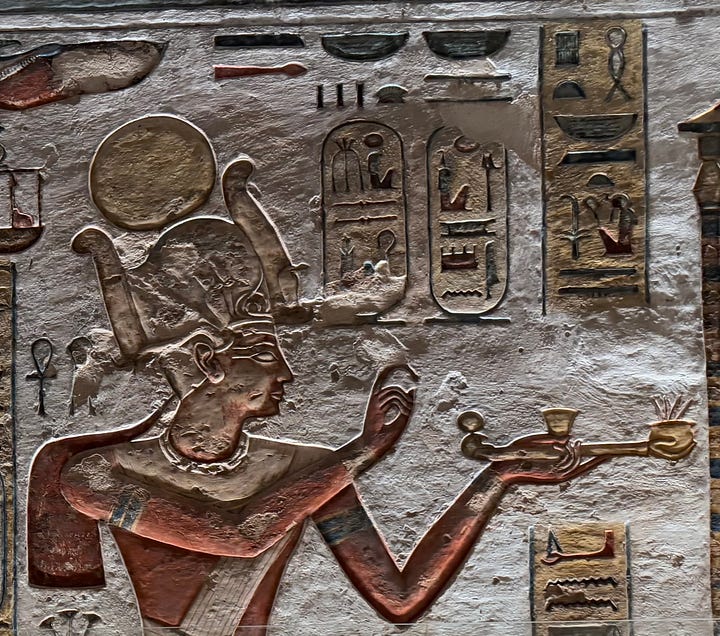
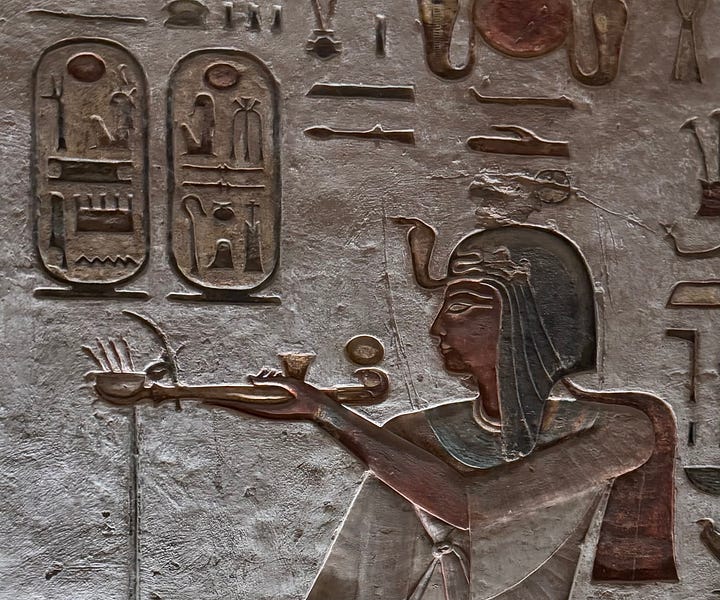
It is impossible to describe or photograph the images and decorations of these tombs. The jackal Anubis was in charge of mummification (first photo). And as we sail now up the Nile, with limited internet service, it is also becoming almost impossible to load them tonight.
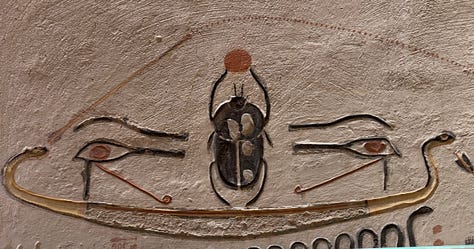
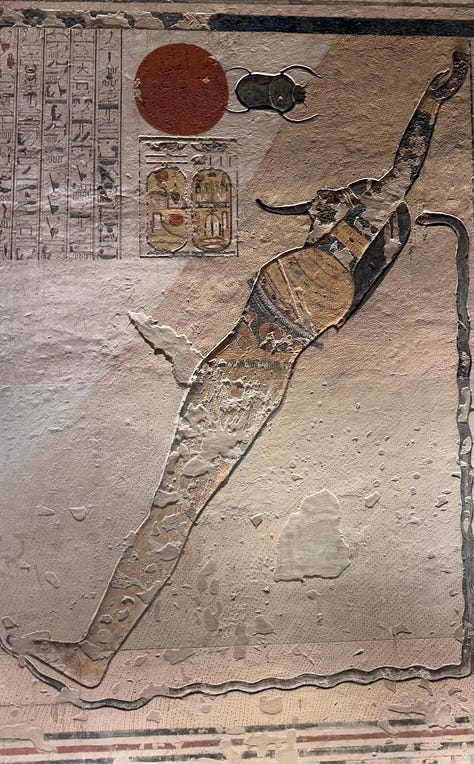
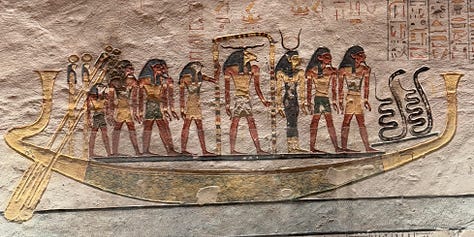
Sorry to cut this short. More tomorrow. The internet here is very limited. This is an edited version of the original post, which did not load correctly due t internet issues.
References and Credits:
The Legacy of Tutankhamun: Art & History, Met Zaki, Farid Atiya Press, 2007.
Valley of the Kings, Dr. Mohamed Nasir, Tiba, 2024.
Photo of King Tut’s face mask purchased on site.
More tomorrow! Thanks for traveling along, so glad you are here~! Welcome new subscribers!










Off the grid for a while is a wonderful thing! Enjoy.
Your pictures and commentary are again just stunning. We are certainly getting a world-class vicarious tour. 🥰
Enjoy the trip and don’t feel pressured to update with a lousy connection! Be present in the past, as it were. PS I think you’ve got a picture of Thoth there, not Anubis. Thoth has an Ibis head.